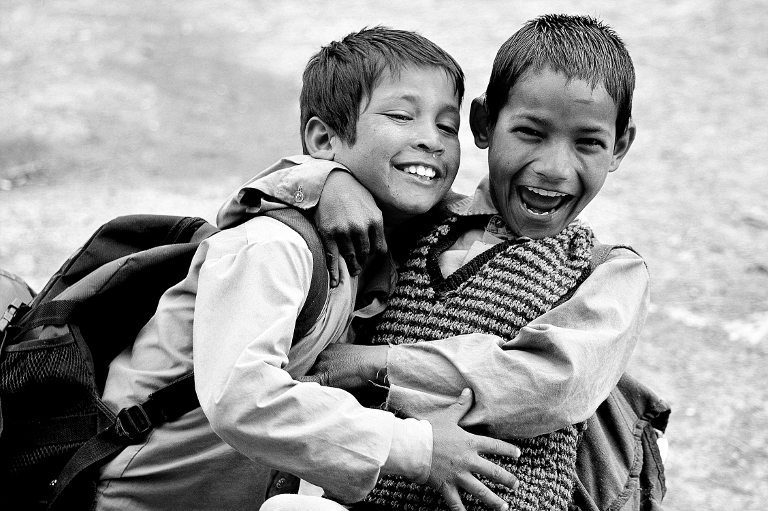Each holiday season, we trudge out (or this year, go online) to try to choose gifts that communicate our love for friends and family. Each year, businesses look with anxious eyes and oft-updated spreadsheets to predict whether a season will be “robust” or “healthy,” i.e., selling more than the previous year – no matter what. These pressures, to find perfect gifts and to “grow” sales, inevitably results in other kinds of growth as well: growth in feelings of being overwhelmed, growth in clutter, and growth of credit card debt – not to mention growth in greenhouse gas emissions, growth in unfair labor practices, and growth in landfill tonnage. In this topsy turvy world of 2020, before we click “buy,” we have an opportunity to rethink what we really want to say this holiday season.
Gifts are a critical form of communication, helping to express emotions, kinship ties, obligations, status, and more in cultures around the world. Anthropologist Yunxiang Yan writes that, “according to the Maori, to receive a gift is also to receive a part of the gift-giver’s own spiritual essence.” Or, as Gary Chapman, who created the concept of “love languages,” argues: “Gifts are visual symbols of love.”
Given this cultural and emotional weight, it’s not easy to point out the nasty underbelly of holiday gift giving without sounding like a total grinch. But I’ll go there: the holidays are the most extreme seasonal expression of a generally broken and bloated American pattern of consumption. That pattern of consumption is implicated in human rights abuses like Rana Plaza, the deadliest garment-factory accident in history, a plastic soup in the Pacific bigger than Texas, and up to 45% of global greenhouse gas emissions.
But it’s delicate at best, and often frankly rude, to point out the social and environmental impact of gifts, especially when surrounded by wrapping paper and Legos and bathrobes. It is decidedly awkward to tell a loved that the new set of comedic refrigerator magnets are made of vinyl and are therefore not only unnecessary in your newly Marie Kondo-ed home, but also extremely toxic and will never biodegrade. It’s churlish to mention that the new grown-up sized footie pajamas were made by women who were separated from their children for months on end in order to earn a pittance doing forced overtime at the sewing machine. Because, of course, while you are surrounded with these compromised items, many of which will all too soon be returned, languish in an overstuffed closet, or eventually be sent to a landfill, you are also, at that moment, surrounded by expressions of love.
Perhaps, then, it’s better to focus on ways to do it better, and to give gifts that truly communicate the goodwill and love we want them to.
For one, there is the increasing trend towards giving “experiences” rather than gifts. This is one way to fill someone’s heart and their life (and their calendar) without filling a landfill. It’s possible to give the gift of quality time or service (Chapman again), like arranging a date or a walk with a loved one, or when my husband repairs his mother’s broken cabinets. There are donations to charity on someone’s behalf. These are all wonderful ways to express love. But, for many people they don’t quite scratch the “gift exchange” itch. We still like to give objects, things – stuff wrapped with a bow.
There are a few simple steps to giving stuff without giving a whole lot of unpleasant and unintentional impacts. First, if you buy something new, make sure you pay attention to where it is made, and who made it. Buying new items should be rare, and they may as a result be more expensive. Second, don’t buy too much. It’s better to give one meaningful gift than a whole slew of presents. Third, buy used whenever you can. Buying used is the single easiest thing you can do to reduce your impact from consumption, and it’s possible today to get all kinds of lovely items secondhand. (If you do want to give a slew of little presents, actually, go for it – as long as they are used). Fourth, consider the gift of care. Is there a service you can render, like fixing, cleaning, or mending something for someone? I remember one long afternoon when my mother in law and I polished a whole bunch of silver together. I had to go to work halfway through, and she finished on her own. It was a gift of care I will always treasure. Finally, even the best gifts do sometimes misfire. If you receive something that you don’t love, don’t worry about it. Just pass it on to someone who will. These steps are a way to give and receive love without harming the people who make our stuff, or the planet.
If ever there was a year to re-evaluate our familiar patterns, 2020 is it. We need to build a truly healthy and sustainable economy, where “robust” growth is fueled not only by exchanging new stuff, but by gifts of care, gifts of service, gifts of experience and, occasionally, gifts of truly good stuff. That way, we will know that we are choosing gifts that actually say what we really mean.
Teaser Photo by Aman Shrivastava on Unsplash





